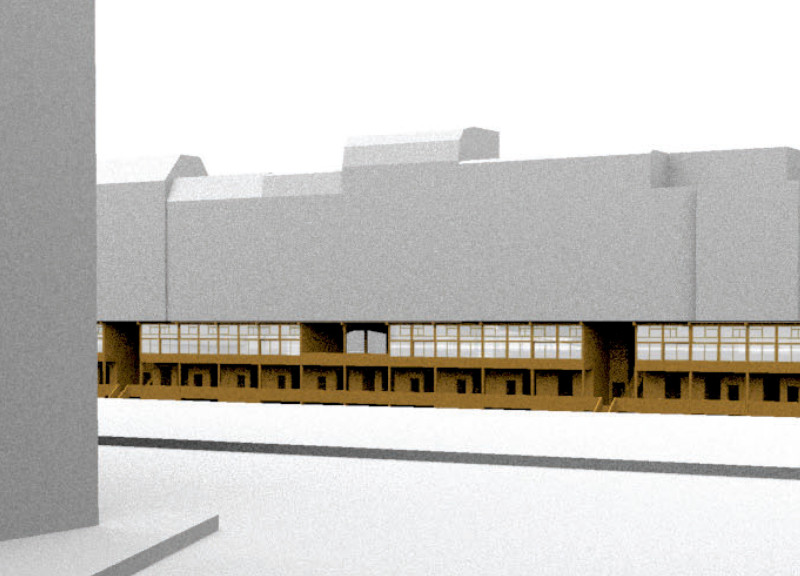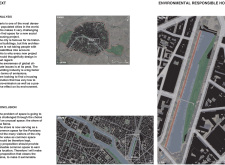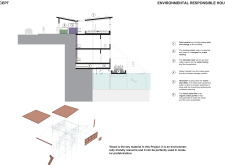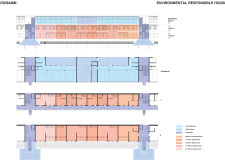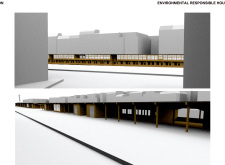5 key facts about this project
The project in Paris addresses the challenges of urban density while focusing on sustainability and accessibility. Located along the shore of the Seine, it aims to offer a solution for social housing that integrates into the city and enhances public space. This setting is important, as it turns the site into not just a residential area but also a lively gathering spot for both locals and visitors.
Sustainable Energy Solutions
Solar panels play a crucial role in the design, serving as a primary source for energy. This choice supports a goal of achieving low to zero emissions for the building. By incorporating renewable energy, the plan aims to lessen the environmental impact and promote responsible energy use. This approach reflects a growing commitment to sustainability in urban living.
Water Management Strategies
Water management is another significant component of the design. A rainwater tank will provide a vital supply for urban farming as well as the residential units. This method addresses water needs while conserving resources. Furthermore, greywater will flow into a marsh plant filter, which helps maintain local water quality and contributes to the ongoing cleaning of the Seine River and canal.
Accessibility and Inclusivity
The design emphasizes accessibility, with barrier-free living as a key feature. All residential units are created to meet the needs of individuals with disabilities. The layout is organized to facilitate both privacy and opportunities for interaction among residents. This focus on inclusivity enhances the quality of life for all those who live there.
Community Engagement
Public spaces are carefully designed to promote community interaction. These areas serve as places for residents to gather, fostering relationships and enhancing a sense of belonging. By improving the shoreline along the Seine, the design underscores the importance of shared spaces in urban life.
At the heart of the project, the spatial design includes a thoughtful blend of private and communal areas, supported by landscaping that connects the built environment with nature.


